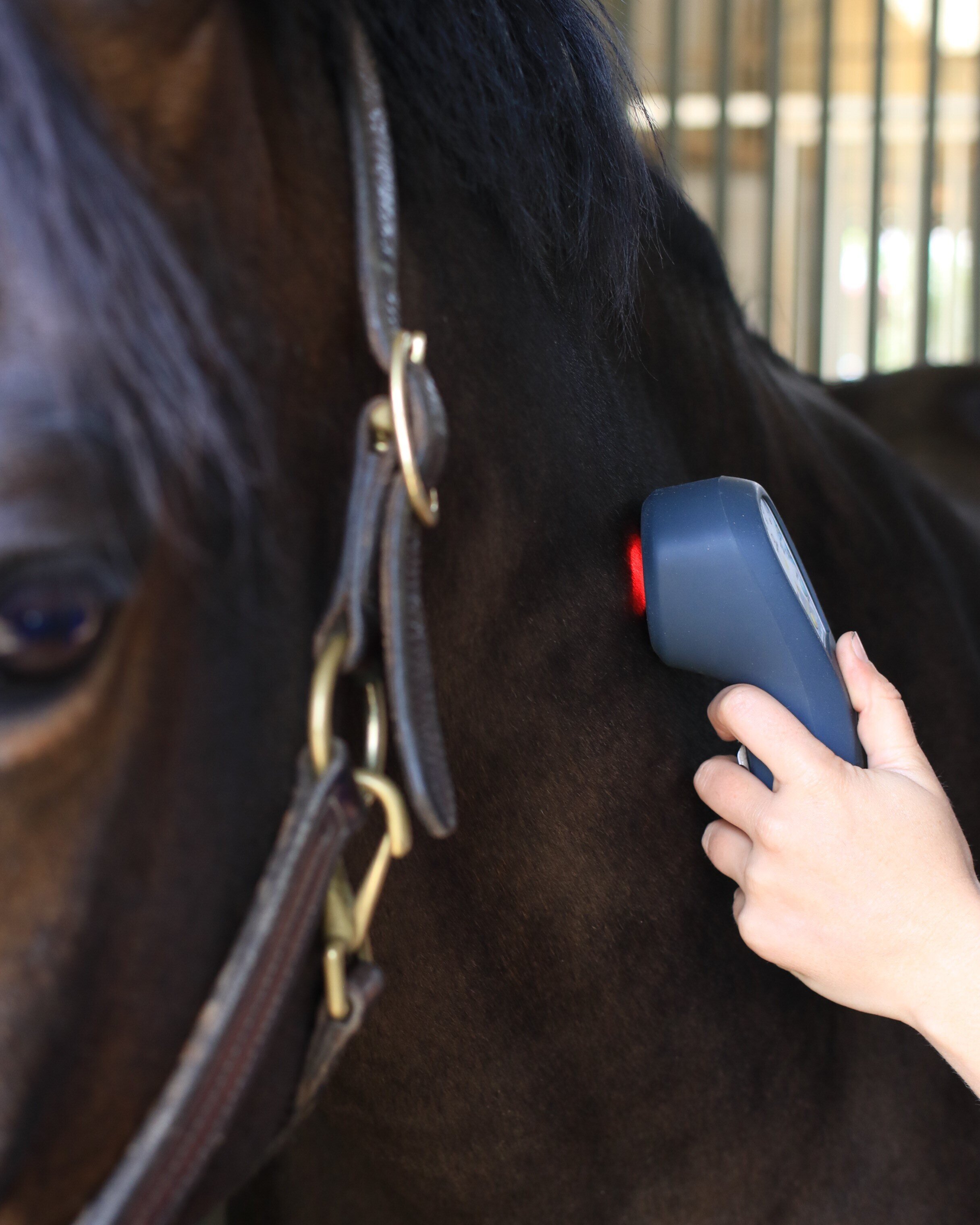Equine Therapy for Kid: Psychological and Behavioral Assistance Explained
Equine Therapy for Kid: Psychological and Behavioral Assistance Explained
Blog Article
Evaluating the Performance of Laser Therapy in Horse Therapy for Injury Rehabilitation
The examination of laser therapy's efficiency in equine injury recovery hinges on numerous elements, consisting of healing time, discomfort mitigation, and cells regrowth. Clinical studies recommend significant improvements in conditions like tendonitis and osteoarthritis, credited to enhanced mobile function and raised ATP production. Vets frequently observe exceptional end results with laser therapy compared to standard methods, positioning it as an essential aspect in equine treatment. However, the requirement for continual monitoring and personalized therapy plans can not be overstated. What details clinical evidence sustains these cases, and how do vets apply these protocols in practice?

Recognizing Laser Treatment
Laser treatment has actually come to be a crucial tool in veterinary medication, particularly in the therapy of equine conditions. Recognized for its non-invasive nature and effectiveness, laser therapy includes the application of specific wavelengths of light to promote cells fixing and decrease swelling. This healing method is significantly preferred for its ability to speed up the recovery procedure in steeds suffering from a range of musculoskeletal injuries and persistent conditions.
The key system behind laser treatment is its capability to enhance mobile functions. In addition, laser therapy advertises vasodilation, improving blood circulation and oxygen delivery to broken tissues, hence accelerating healing.
In equine medication, laser therapy is specifically valuable for conditions such as tendonitis, osteo arthritis, and wound healing. The strategy is lauded for its pain-relieving properties, enabling horses to gain back movement and feature a lot more rapidly. Vets also value its minimal side impacts contrasted to other therapy modalities, making it a trusted and safe alternative for equine care.
Just How Laser Therapy Functions
To understand just how laser therapy functions, it is necessary to explore the communication between light power and organic tissues. Laser therapy, likewise called Low-Level Laser Treatment (LLLT) or photobiomodulation, uses particular wavelengths of light to penetrate tissues and promote mobile procedures. The system rests on the absorption of photons by cell chromophores, largely within the mitochondria, which are crucial for energy production.
Upon absorption, these photons set off a collection of biochemical modifications, improving mitochondrial feature and causing raised adenosine triphosphate (ATP) manufacturing. This surge in ATP increases mobile metabolic rate, advertising cells repair service and regrowth. In addition, laser treatment regulates inflammatory actions by impacting cytokine degrees and minimizing oxidative anxiety, consequently relieving discomfort and swelling.
An additional considerable aspect of laser treatment is its function in enhancing microcirculation. The therapy advertises vasodilation, improving blood circulation and oxygen shipment to damaged cells. This facilitates the elimination of cellular particles and sustains the proliferation of fibroblasts and collagen synthesis, critical for wound healing.
Scientific Evidence
The efficiency of laser therapy in equine therapy has been validated via different clinical research studies, showcasing its therapeutic possible across an array of conditions. A research study conducted by Turner et al. (2012) demonstrated that steeds treated with low-level laser therapy (LLLT) for ligament injuries exhibited increased healing compared to those obtaining standard therapies.
Similarly, research by Johnson and associates (2015) focused on equine muscle mass injuries, exposing that laser therapy substantially quickened muscular tissue fiber regrowth and lowered muscle stiffness. These searchings for were corroborated by histological evaluations revealing better muscle mass cells company. Moreover, scientific analyses have actually revealed that laser treatment can minimize chronic conditions such as osteoarthritis. A research by Smith et al. (2018) published here reported that equines with osteoarthritic joints experienced significant discomfort alleviation and increased variety of activity adhering to a routine of laser treatment sessions.
Veterinarian Insights
Vet experts have significantly identified the value of laser therapy in equine therapy, citing both empirical proof and firsthand experience. Dr. Jane Smith, a leading equine veterinarian, notes that laser therapy has revealed remarkable efficacy in minimizing swelling and increasing cells repair work. "In my practice, I have actually observed quicker recuperation times in equines treated with laser treatment compared to conventional techniques," she specifies. This sentiment is resembled by Dr. John Doe, that highlights that laser treatment offers a non-invasive alternative with marginal side impacts, making it particularly fit for equine clients.
Veterinarians likewise value the versatility of laser treatment. She directs out that laser therapy can be tailored to the certain requirements of each equine, making certain optimal outcomes.

Practical Considerations
An essential facet of executing laser therapy in equine treatment includes comprehending the practical considerations that guarantee its efficiency and safety and security. Firstly, it visit is critical to choose the suitable laser gadget, as different kinds differ in wavelength, power, and penetration depth. Vets must be well-versed in these specifications to tailor treatment procedures successfully per injury type
Moreover, the frequency and period of laser treatment sessions need careful planning to maximize restorative advantages while lessening any kind of possible adverse effects. Regular surveillance of the horse's action to therapy can lead her latest blog essential adjustments in the treatment routine. Developing a risk-free and regulated atmosphere during treatments is additionally necessary to avoid unintentional direct exposure to laser emissions, which could hurt both the horse and the handler.
Educating and certification of employees carrying out laser treatment are paramount to make certain correct strategy and to maintain safety and security standards. Additionally, preserving precise records of each session, consisting of laser setups and observed end results, is vital for evaluating the general efficiency of the therapy and for making data-driven decisions.
Final Thought
Laser therapy has emerged as an effective method in equine injury rehab, providing significant benefits in healing time, pain relief, and tissue healing. For ideal outcomes, continual monitoring and individualized therapy procedures stay crucial in leveraging the full capacity of laser therapy in equine treatment.
Report this page